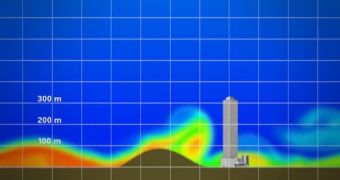It will be some time before a daredevil even thinks about grabbing hold of a surfing board and attempting to ride them, but the fact remains that some really monstrous waves form in the deep ocean.
Writing in the journal Geophysical Research Letters, University of Washington researchers detail how, with the help of state-of-the-art equipment, they managed to record such waves breaking for the first time ever.
In their paper, the scientists explain that deep-sea waves come into being between layers of water that differ in terms of density.
Most of them are nearly as tall as a skyscraper, and pack loads of heat, energy, carbon and nutrients.
Hence the fact that, although many are utterly oblivious to their existence and researchers have a rather though time documenting them, they are of utmost importance for long-term climate cycles.
Otherwise put, all the turbulence they cause helps keep marine ecosystems up and running.
In order to record such monster waves breaking, the University of Washington researchers had to travel to the Samoan Passage. It is through this channel that water originating in the deep Antarctica works its way north.
“Basically the entire South Pacific flow is blocked by this huge submarine ridge. The amount of water that’s trying to get northward through this gap is just tremendous – 6 million cubic meters of water per second, or about 35 Amazon Rivers,” researcher Matthew Alford explains.
Needless to say, having this much water try to squeeze through a fairly small space caused quite a lot of commotion. Thus, it is here that underwater waves that measure up to 800 feet (244 meters) in height form.
As they break, the waves produce a lot of agitation and cause dense water in the deep of the ocean to mix with the water in the upper layers.
“We found there’s loads and loads of turbulence in the Samoan Passage, and detailed measurements show it’s due to breaking waves,” Matthew Alford says.
By the looks of it, the deep-sea waves that were recorded during this expedition broke some 3 miles (4.8 kilometers) below the surface. Interestingly enough, the breaking process was found to last for about an hour.
The researchers who worked on this project say that, all things considered, such monster underwater waves form and break in many other regions.

 14 DAY TRIAL //
14 DAY TRIAL //